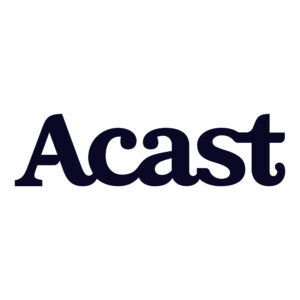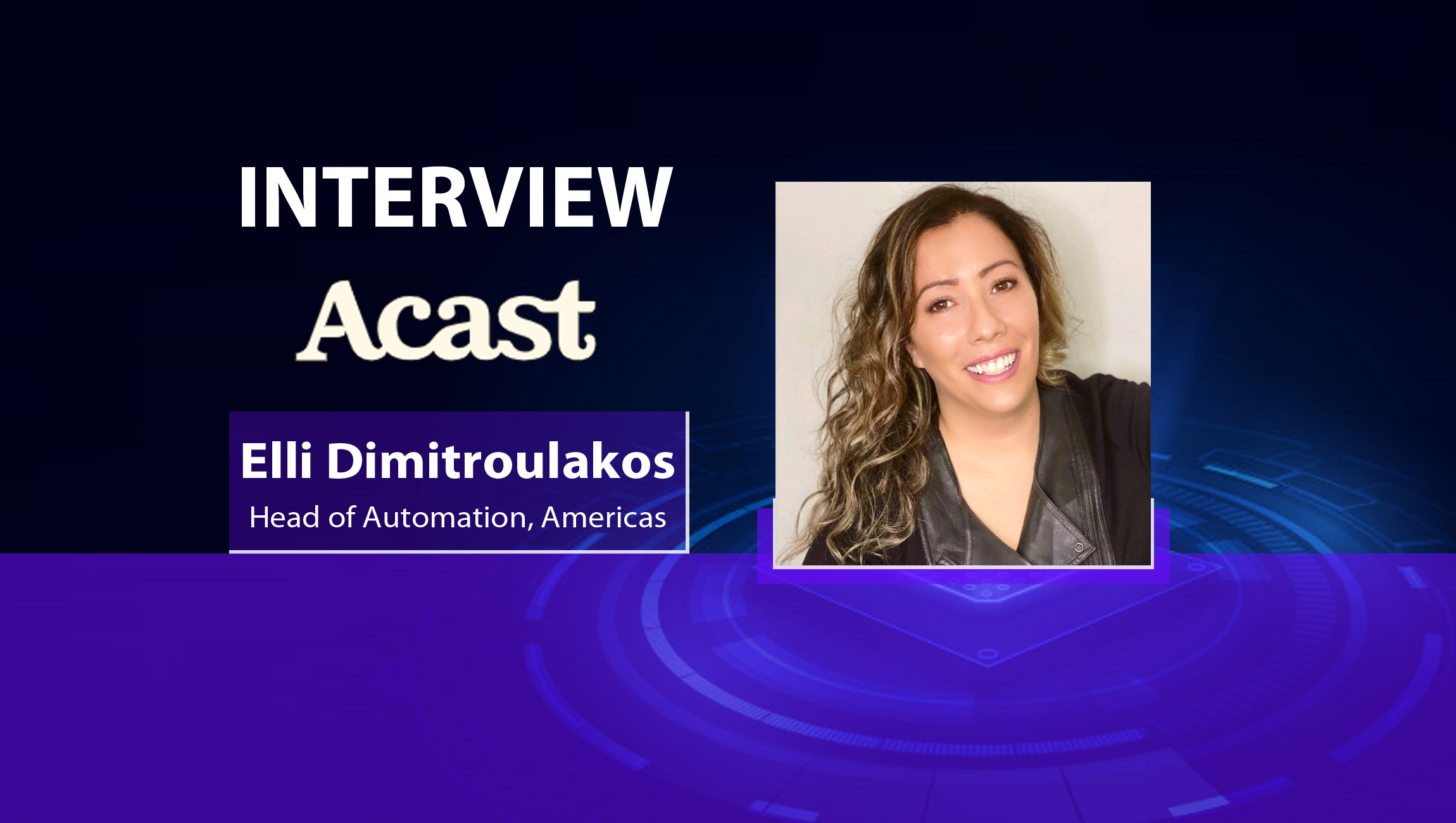Podcasting as a concept is maturing quickly, with several brands now sporting their own podcast channel (sometimes even two or more!). Podcasts can help marketers boost their content marketing and customer engagement efforts; Elli Dimitroulakos, Head of Automation, Americas at Acast dives into this growing trend while highlighting the impact of programmatic ad trends in podcasting:
______
Welcome to this MarTech Series chat Elli, tell us more about yourself and your journey through the years?
Hi Paroma, thanks for having me! In college I started to show an interest in advertising. I found both the art and science behind it fascinating, and wanted to be part of an industry that marries creativity with innovation to enhance our lives. I gravitated towards TV because of my love for video storytelling, and began a 10-year career at Cablevision.
During this time, digital solutions like SEO, Google Analytics, and web design began to surface, and I noticed that this sort of technology was allowing my clients to gather data and use it to make decisions and enhance ROI. I liked the accountability it afforded my clients, and that’s where my love for ad tech began.
I started to teach myself everything I could about these new methods of media buying, and was promoted into a subject matter expert role for all things addressable TV — tasked with bringing this new tech to market, while training internal teams and further enabling innovation. Soon after, programmatic technology began to emerge that enabled premium video buying on a global scale. I found this to be a revolutionary idea and was introduced to Yashi, a location-focused video DSP startup that operated out of Toms River, NJ, and that had very ambitious goals, impressive leadership, and equally impressive tech. There, I led sales for the East Coast region and worked with agency holding companies, trade desks, DSPs and SSPs to conduct various integrations to allow for scalable reach across premium video, such as CTV.
Yashi was acquired by Nexstar Broadcasting and I once again found myself in the role of bridging the gap between the old and the new.
I was later approached to join Trusted Media Brands, formally known as Reader’s Digest Association. TMB had a roster of reputable, strong, household brand names like Taste of Home and The Family Handyman, and were looking to build out their programmatic offering. During my time at TMB I designed, executed and scaled our private marketplace solutions, which included PMP and PG solutions, dynamic creative products, data solutions, licensing agreements and various integrations — and that led to 175% year-on-year growth, and the expansion of the programmatic team.
We’d love to hear about the Acast platform and highlights on some of latest innovations?
Acast is a podcast hosting, distribution and monetization company. We’re home to more than 30,000 podcasts with approximately 300 million listens each month — and those numbers are growing all the time.
We strongly believe in the open podcasting ecosystem, where podcasts are powered by RSS feeds. With Acast, creators can take full advantage of the whole podcasting universe because their shows can be enjoyed by their fans on any and every listening app and platform out there.
Acast was founded in 2014 and, since 2017, has been pioneering programmatic ad buying for the podcast industry. We introduced dynamic ad insertion — now standard practice in podcasting — and are paving the way for the industry with technology for contextual targeting and automating frameworks to meet important brand sentiment needs. We’ve grown to focus more on targeting, measurement, attribution, privacy and standardization, always while putting the creator first.
For advertisers, Acast has designed a solution that delivers seamlessly against their campaign KPIs and their buy-side deal setups. For podcasters, who are the lifeblood of everything we do, Acast’s programmatic offering creates greater revenue potential — and, crucially, we do it without sacrificing the quality of their shows.
Now in our fourth year of programmatic, Acast is listed in the inventory discovery tools of six major DSPs and works with buyers based in 20 markets, using multiple execution types. Currently, programmatic guaranteed is the most popular execution type across the Acast marketplace, and last year alone we saw an unprecedented 215% year-on-year growth in programmatic ad sales revenue — with that figure expected to increase once again in 2021.
When it comes to targeting, outside of our European markets this can be achieved on the supply side and through Acast’s partnership with Nielsen audience — based on web browsing, demographic and purchase data, replicating the types of granular targeting buyers have come to expect.
In Europe, GDPR means all publishers need to align with the IAB’s Transparency and Consent Framework 2.0 — and that’s something we’ve taken a leading role on for several years now, to help move the whole industry forward. We collaborated with the IAB to ensure podcast companies were compliant with guidance from the Information Commissioner’s Office (ICO), and also worked with the IAB to help educate and prove to DSPs that targeting methods remained in line with TCF 2.0.
Today, Acast is still the only podcast company aligned with all four of the IAB’s Podcast Measurement Guidelines 2.0 metrics, and is a leading partner in the 2.1 recertification in process. The IAB even hosts its own podcasts with us.
We’d love to dive into your thoughts on the current programmatic ad trends you’ve been observing – can you talk about the recent evolutions and technologies that are driving change for advertisers and marketers on the whole?
Specifically in terms of programmatic ad trends within the podcast industry, other players in this space are arguably only offering a band-aid approach by simply merging technologies that have been acquired over the past year or so. While these acquisitions make for flashy news headlines, they’re really an indication that major audio platforms are still playing catch-up in an attempt to capitalize on the rapid shift in podcast content and listener growth.
And, while this is indicative of podcasting as a medium still being very much in its infancy, it also implies that a period of innovation and unification will be needed, which will likely take between 18 and 36 months. With this merging of disparate technology, there’s a lack of transparency and cohesion in the space — as well as limitations in omnichannel reporting and measurement — but these are all technical nuances that Acast has already begun solving.
Standardizing and evolving ads.txt for podcasts, to account for the open ecosystem, has also been a big focus at Acast — and we’ve built partnerships with the IAB Technical working group and various publisher and agency partners. In addition, we’re focused on ensuring measurement and attribution technologies can properly access, grasp, report and iterate on various KPIs, such as sales lift, brand lift, and so on, and we continue to innovate around contextual solutions that bring brands closer to the listener — all while sustaining the immersive and intimate podcast experience.
How do you feel programmatic advertising will evolve in future? In fact, in what ways do you feel the ad industry will evolve or be impacted in the next few years because of the growth in programmatic ad demands?
If this past year has taught us anything, it’s that companies need to be flexible, scaleable, and nimble to respond to fast changes in consumer demand and behaviour, as well as societal and cultural change.
What’s incredible about programmatic — and all machine algorithms, for that matter — is that it’s agile and constantly evolving. For example, when the protests broke out last year after the death of George Floyd, advertisers sought to “pause” their advertising in solidarity, while also taking the moment to update their campaign messaging to voice their support and advocacy. This notion is what programmatic was built on: real-time decision making.
By design, Acast’s programmatic capabilities are always learning and improving to build a better product for our podcasters and our ad partners. We humanize our technology by keeping the millions of organic conversations that are happening across our podcasts — and their sentiment — at the heart of our thinking.
As more and more buyers shift to programmatic, we’ll see a consolidation of technologies aimed at unifying media and providing omnichannel solutions. Examples of this include Universal IDs and how they’ll play with independent publishers’ first-party data, and various “walled garden” solutions around content, such as Google’s FLoC and cohort targeting.
Additionally, privacy and transparency will continue to remain top of mind. The industry as a whole will have to do a lot of work to restore consumer trust and educate audiences on the intersectionality of all these new data solutions.
As more and more tasks are automated and technology evolves around these principles of privacy, I believe the industry will begin to focus more on the storytelling aspect of advertising — spending more time on strategic, top-line brand development projects that bring together brands and publishers, to create more purposeful content and creative.
Can you talk about some of the top ad practices you’ve seen in use or being followed by leaders in the industry?
The most notable shift we’re seeing in programmatic podcast buying compared to other media is the willingness from buyers to lean more into contextual relevancy and sentiment, and rely less on third-party data. Perhaps we’ve all grown tired of seeking an answer to the age-old question, “how effective Is cookie-based targeting?” Or, perhaps, with the cookie crumble on the horizon and the labor of love already applied towards its utility, buyers are now going back to where advertising really started: exceptional creative storytelling married organically with engaging and purposeful content.
Buyers continue to have measurement and attribution top of mind, and are favoring full-funnel, strategic approaches within podcasts, versus what we’ve seen in previous years. They’re appreciating the value of connecting with podcast influencers early on — and throughout their community building — while also keeping an eye on the effectiveness on the bottom line.
Lastly, we’re also seeing a shift in the approach to brand safety. This is in part due to the nature of podcasts being less scripted and more conversational. Also, many studies now highlight that generic brand safety measures with broad approaches inadvertently create more of a barrier than a safety net. This is all leading buyers to revisit their brand safety strategies.
A few thoughts on the future of B2B marketing and B2B advertising and how newer channels and technologies will influence the way both marketers and advertisers plan and execute?
There’s a revolution coming in our society, and trickling into media, which I call “value- or ethical-based decisioning”. What this means is that consumers want to align with a purpose and with communities, rather than just seek out a product for a benefit.
Look at companies like Peloton, for example, whose instructors become our personal trainers and who we know on a first-name basis and follow across social media. B2B advertisers would benefit by understanding their core target audiences’ purpose and closely aligning with micro-influencers and their communication strategies.
Podcasts are ideal for this type of alignment because of the close connection that listeners develop with the hosts of their favorite shows. We’re finding time and again that listeners trust the brand and product recommendations from their favorite podcast hosts, and that they believe those hosts only endorse products they truly believe in themselves.
Additionally, we’re seeing more and more listeners — particularly those from younger age groups — looking to podcasts as a means to discover new brands and products. It’s also interesting to note that these younger listeners have high expectations from the brands they support. According to findings from Global Web Index, Gen Z wants the brands they support to be bold, inclusive, and socially responsible.
This is a group that marketers and advertisers across all media should be listening to — but, specifically for my industry, that same Global Web Index report said that in Q2 of this year nearly 34% of Gen Z was listening to podcasts. That’s a massive amount of listening time and buying power.
Some last thoughts and takeaways before we wrap up?
As Acast continues to build and innovate around monetization for all the world’s podcasters, we’re also making a conscious effort to support and amplify diverse voices everywhere. I have strong ties to my own Greek roots, and I’m a mentor for The Hellenic Initiative where I help individuals from Greek backgrounds begin and build their careers in the US — so creating opportunities for diverse voices is also something that’s extremely important to me on a personal level.
I’m proud to say that Acast recently partnered with Mindshare on its Black Community PMP, which features podcasts from the Acast network including Naked Beauty, Toure Show, and many more. This partnership speaks to Acast’s mission of elevating diverse and underrepresented voices in podcasting because of the monetization potential it creates for the podcasters who identify with these communities.
 Acast is a podcast hosting, distribution and monetization company that’s home to more than 30,000 podcasts with approximately 300 million listens each month.
Acast is a podcast hosting, distribution and monetization company that’s home to more than 30,000 podcasts with approximately 300 million listens each month.
Elli Dimitroulakos is the Head of Automation for the Americas at Acast. She drives programmatic innovation and adaptation by uncovering technologies and standards that provide a clear and actionable path for advertisers to identify their most valued customers within podcast communities, and automate the media planning, buying and reporting process. Elli leverages the same technologies to offer fair reimbursement to podcasters for the high-quality content they consistently produce, and the deep relationships they’ve cultivated with their listeners.
Catch our Latest Episodes of The SalesStar Podcast!
Episode 96: B2B Sales Intelligence Trends And Best Practices With James Isilay, CEO At Cognism
Episode 95: Enterprise Sales Best Practices With Damien Swendsen, VP Sales At InsideView
Episode 94: Getting Smarter About Your Choice Of Martech And SalesTech: With Yoni Tserruya, Co-Founder & CEO At Lusha






